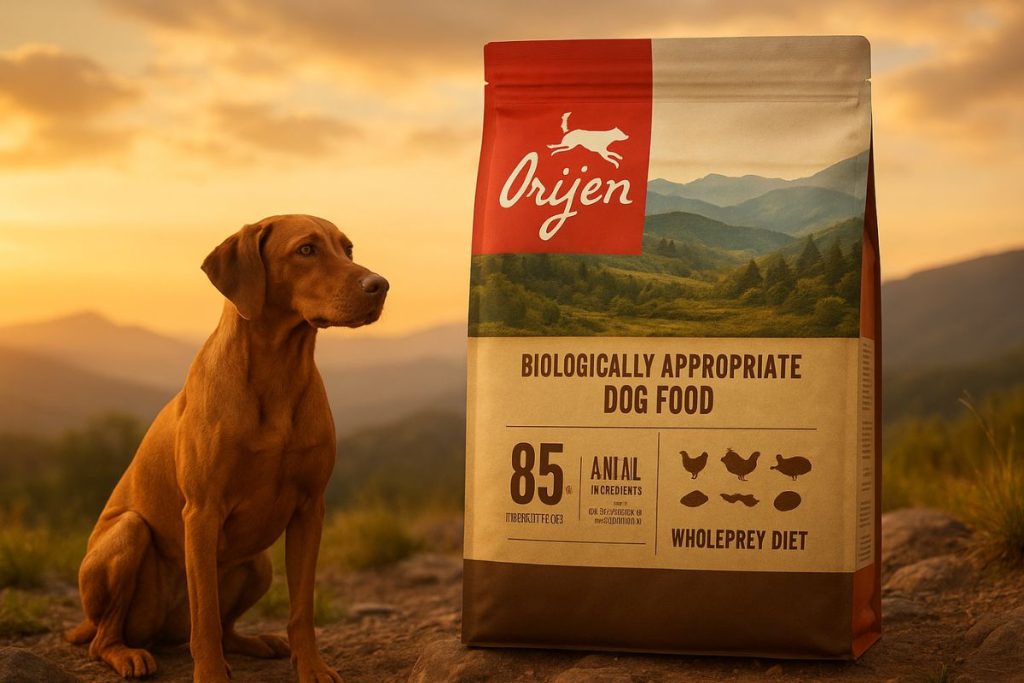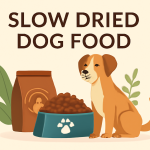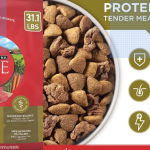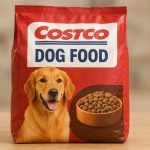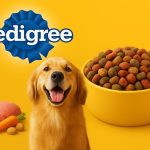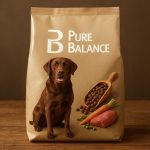Great. I’ll create a comprehensive 4000-word SEO-optimized blog post on the topic: ‘Orijen Dog Food: Protein-Packed for Active Dogs’.
The content will follow all essential on-page SEO best practices for 2025, including:
- Strategic use of the primary keyword ‘grain free dog food’ in the title, introduction, and conclusion
- Natural integration of secondary keywords: instinct dog food, farmina dog food, open farm dog food, and zignature dog food
- Proper LSI keywords for semantic relevance
- Compelling meta title and description
- Proper heading structure with H1, H2, and H3 hierarchy
- Engaging, scannable content with bullet points, stats, CTAs, FAQs, and image optimization
I’ll let you know when the article is ready for your review.
Grain Free Dog Food: Orijen’s Protein Diet for Active Dogs
Meta Title: Grain Free Dog Food: Orijen’s Protein Diet for Active Dogs
Meta Description: Discover why Orijen’s grain free dog food is ideal for active dogs, with its high-quality, protein-rich recipes. Learn about benefits and key alternatives.
Dogs with active lifestyles need a grain free dog food that delivers sustained energy and nutrition. Orijen is a premium brand built on a “biologically appropriate” philosophy – it uses meat-rich, grain-free recipes formulated to fuel energetic, working, or athletic pups. In this guide, we explore how Orijen’s high-protein formula supports muscle, energy, and overall health in active dogs. We also compare Orijen to other top grain-free, protein-packed dog foods like Instinct, Farmina, Open Farm, and Zignature, helping you choose the best diet for your dog’s needs.
Why Grain-Free, High-Protein Diets Benefit Active Dogs
Active dogs (such as sporting, working, or highly playful pets) often have higher protein needs than more sedentary dogs. A high-protein diet helps build and repair muscle tissue, maintain a sleek coat, and provide energy. According to Rover.com, “highly active dogs and canine athletes may perform well on a high-protein diet that helps build and repair muscles while fueling their energy reserves”. Protein also supports a strong immune system, sharp vision, and other vital functions. On the flip side, adult dogs should still get a balanced diet (including fats and limited carbs) – grain-free dog foods like Orijen aim to provide this balance by minimizing starchy fillers and focusing on meat, fats, and fiber-rich vegetables.
Active dogs in high-energy households or jobs can struggle with weight or undernourishment if their food is too high in carbs. A grain-free, meat-based food mimics their ancestral diet and helps maintain lean body condition. Benefits of a protein-rich, grain-free diet for active dogs include:
- Muscle and Energy: High-quality animal proteins (chicken, fish, turkey, etc.) supply essential amino acids for muscle mass and stamina.
- Weight Management: More protein and fat (and fewer carbohydrates) can help active dogs maintain weight during rigorous exercise.
- Coat and Skin Health: Nutrient-dense proteins and healthy fats (like omega-3s from fish) support a shiny coat and strong skin barrier.
- Digestive Support: Grain-free recipes often replace grains with digestible alternatives (like legumes or vegetables) that can be easier on sensitive tummies. Also, freeze-dried or raw-coated foods like Orijen retain more natural enzymes and probiotics.
- Allergy Consideration: Grain-free diets may reduce exposure to grains (corn, wheat, soy) that can trigger allergies in some dogs, though true allergies are relatively rare.
These points make clear why many owners choose a high-meat, grain-free dog food for working or highly active dogs.
What Makes Orijen Dog Food Special?
Orijen sets itself apart with a “WholePrey” philosophy – each formula packs in multiple animal parts (muscle meat, organs, cartilage, and bone) to mirror what a dog’s ancestors would eat in the wild. According to the manufacturer, Orijen Original dry food is “crafted with 85%* quality animal ingredients like fresh or raw free-run chicken and turkey and wild-caught fish”. This means the first five ingredients in many Orijen recipes are all animal proteins. In practice, Orijen’s formulas often list multiple proteins up front (e.g. chicken, turkey, fish, chicken liver, etc.), ensuring a rich protein profile.
Key features of Orijen dog food include:
- 85% Animal Ingredients: Orijen dry foods contain at least about 85% meat, organs, fish, and bone by weight (before cooking). These ingredients are fresh or raw-frozen, meaning they’re nutrient-dense.
- Biologically Appropriate Nutrition: The emphasis is on lean, whole-meat proteins (including organ meats) and very few grains or fillers. Orijen’s founder describes the diet as “biologically appropriate,” designed to mirror a dog’s ancestral diet.
- Freeze-Dried Raw Coating: Most Orijen kibbles are coated with freeze-dried meat to enhance palatability and raw nutrition.
- Grain-Free Formula: Orijen Grain-Free diets avoid wheat, corn, rice, potatoes, and tapioca. Instead, ingredients focus on meats and nutrient-rich pulses or vegetables.
- Diverse Protein Sources: Many recipes combine poultry, fish, and sometimes eggs or beef, providing a spectrum of amino acids. For example, the Original formula’s top ingredients are chicken, turkey, flounder, mackerel, and chicken liver.
- Added Fruits and Veggies: The remaining 15% of Orijen’s formulas include fresh fruits and veggies (pumpkin, apples, collards, cranberries, etc.) for vitamins, fiber, and antioxidants.
- No Artificial Additives: Orijen avoids artificial colors, flavors, and preservatives. Their recipes rely on refrigeration or freezing to preserve freshness.
Overall, Orijen stands out because “Orijen provides a whole-prey, biologically appropriate diet consisting of only the best cuts of meat”. The result is a rich, high-protein food that many vets and reviewers rate highly.
Orijen Original Dry Food at a Glance
- Protein & Fat Content: The flagship Original recipe contains about 43.1% crude protein and 20.4% crude fat (dry matter basis). This is well above the average for typical dog kibble, reflecting its performance pedigree.
- AAFCO Complete & Balanced: Like all Orijen recipes, it meets AAFCO nutrient profiles for all life stages (puppy through adult). This means you can safely feed it to active adult dogs, growing puppies, and even pregnant or nursing dogs (though amounts may vary).
- Key Ingredients (Original): Chicken, Turkey, Flounder, Whole Mackerel, Chicken Liver, Red Lentils, Chickpeas, etc.. Note that while the diet is grain-free, it does include pulses (lentils, chickpeas) as carbohydrate sources.
- Manufacturing: Orijen products are made in Canada and the USA using regional ingredients. Their focus on local sourcing often appeals to consumers seeking high quality standards.
- Diet Variants: Orijen offers different lines – in addition to Grain-Free (Original, Regional Red, Six Fish, Tundra, etc.), they have a grain-inclusive “Amazing Grains” series and specialized puppy and senior formulas.
“Orijen dog foods are heavy on whole meat protein,” notes Dogster’s nutrition expert, pointing out the brand’s use of fresh and raw meats while keeping carbs very low. Indeed, Orijen’s protein numbers (30%+ DM) and high meat content make it a favorite for owners of very active dogs.
Orijen Dog Food: Nutritional Highlights
Comparing Orijen to typical dog food reveals its emphasis on meat and nutrients:
- High Protein & Fat: Orijen Original’s 43% protein and 20% fat (dry matter) are “above average” for dry kibble. By contrast, many mainstream dog foods hover around 25–30% protein.
- Low Carbs: Because of the high protein and fat, Orijen’s carbohydrate level is relatively low (often under 30% on a dry basis). This aligns with ancestral diets and can benefit dogs needing less starch.
- Diverse Animal Proteins: Each recipe includes multiple protein sources. For example, Six Fish uses five different fish; Regional Red combines beef, pork, pork liver, etc. This variety can boost palatability and nutrition breadth.
- Sensitive Options: All Orijen dry foods are free of grains and most common fillers, so they can be suitable for dogs with cereal sensitivities. (However, dogs with certain allergies may still react to a protein like chicken or potato, so always check ingredient lists for your pet.)
- Freeze-Dried Coating: The raw freeze-dried bits add extra flavor and nutrients. Owners often say this makes dogs eagerly eat Orijen.
- Vitamins & Supplements: Orijen adds a spectrum of vitamins, minerals, and probiotics (from freeze-dried kefir) to ensure complete nutrition.
- Real-World Benefits: Many users report that switching to Orijen improved their active dog’s coat shine, digestive regularity, and energy levels (anecdotal but common in reviews).
In summary, Orijen delivers “super-premium” nutrition: very high meat content with scientifically balanced nutrients. This makes it especially appealing for active dogs needing optimal fuel.
Comparing Orijen to Other Top Brands
Several other brands also offer grain-free, high-protein formulas. Here’s how Orijen stacks up against some popular alternatives:
- Instinct Dog Food: Known for raw-focused recipes, Instinct (by Nature’s Variety) offers high-protein formulas too. Instinct foods are minimally processed and rich in meat and real produce. Many Instinct Original recipes are grain-free, with the meat source as the first ingredient. For example, Instinct’s dry and wet foods often list a named meat (chicken, beef, lamb, etc.) plus minimal fillers. Instinct wet foods are especially protein-heavy (up to 95% animal protein in some cases). Like Orijen, Instinct does not use artificial preservatives or GMOs. The two brands are similar in quality, though Orijen typically features more variety of meats (including fish and game in some formulas) and a freeze-dried coating.
- Farmina Dog Food: Farmina (particularly the Natural & Delicious line) emphasizes named meat first ingredients and includes ranges with alternative grains or ancient grains. Their Grain-Free sub-lines (e.g. N&D Pumpkin, N&D Prime) feature high protein levels. In fact, WagWalking notes that Farmina’s fish-based N&D Ocean line can have extremely high protein (e.g. 55.2% dry protein in a Cod & Pumpkin wet formula). Across Farmina’s grain-free recipes, the first ingredient is always a quality meat, and overall protein content is well above average. Farmina also infuses vitamins at lower temperatures (“cold infusion”) for potency. Compared to Orijen, Farmina offers more grain-inclusive options (like quinoa or spelt-based diets) but also comparable grain-free diets. Both brands are grain-free, high-meat, and free of artificial additives. Some owners choose Farmina for its unique proteins (e.g., boar, quail) or pumpkin-rich lines, while Orijen is chosen for its whole-prey approach.
- Open Farm Dog Food: Open Farm emphasizes ethical sourcing and transparency. Their grain-free dry recipes feature named meat meals (e.g. “grass-fed beef meal,” “wild-caught salmon meal”) as the main protein sources. According to DogFoodAdvisor’s analysis, Open Farm’s grain-free line has an average protein around 34% dry matter, with healthy fat and relatively low carbs. Open Farm does include peas and legumes (like Orijen) but still ranks high; each recipe got 4.5–5 star ratings. Open Farm recipes often include vegetables and fruits (pumpkin, sweet potato, apples) alongside the meat. If transparency and sustainable practices matter to you, Open Farm is notable, but nutrition-wise it is on par with Orijen: a high-protein, grain-free diet that uses quality meats.
- Zignature Dog Food: Zignature offers grain-free diets formulated by veterinarians. Their formulas (like Turkey, Trout & Salmon, Kangaroo) use a single protein source per recipe (a so-called “limited ingredient” approach). For example, one Zignature recipe lists turkey and turkey meal as top ingredients. DogFoodAdvisor reports that Zignature’s average protein content is about 36% (dry matter) with ~16% fat. It also notes that Zignature’s brand “uses a moderate amount of named meat as its dominant source of animal protein”. This gives Zignature a 5-star rating there. In practice, Zignature is a more straightforward high-protein kibble with peas and legumes as secondary carbs. Orijen, by contrast, tends to pack more variety of meats into each kibble. Owners of dogs with grain or common-protein allergies sometimes try Zignature for its novel proteins (like kangaroo or duck). Both brands are grain-free and high in protein; Orijen might have a richer meat profile and more diverse ingredients, while Zignature’s appeal is simplicity and limited ingredients.
Each of these brands – Instinct dog food, Farmina dog food, Open Farm dog food, and Zignature dog food – earns praise for focusing on real meat and avoiding cheap fillers. In the end, Orijen is distinguished by its especially high meat percentage and variety, but any of these can be a good choice for an active pup’s grain-free diet. Owners should compare specific ingredient lists and guaranteed analysis to match their dog’s needs and sensitivities.
Tips for Switching to Orijen
If you’re transitioning your dog to Orijen or any new high-protein food, do it gradually over 7–10 days. Mix increasing amounts of the new food with the old food each day. Sudden diet changes can upset digestion. Monitor your dog’s stool consistency and energy levels during the switch.
- Start slow: Begin with ~25% Orijen mixed into your dog’s current food, then 50%, then 75% over a week.
- Portion control: High-protein foods can be more calorie-dense. Use Orijen’s feeding charts (or consult your vet) to determine the right amount. Active dogs typically need more calories, but every dog is different based on size, breed, and exercise.
- Hydration: High-protein diets may require your dog to drink more water. Keep fresh water available, especially after exercise.
- Observe and adjust: Watch for changes in appetite, weight, and elimination. A healthier digestion often results in smaller, firmer stools due to the food’s nutrient density. If you notice loose stools or vomiting, slow down the transition or discuss concerns with your vet.
Orijen’s own guidelines stress adjusting portion size to maintain an “optimum weight and peak conditioning”. Because it’s so protein-rich, you may find your dog needs slightly less kibble by volume than with a lower-protein diet. As always, consult your veterinarian if you have specific health concerns.
Frequently Asked Questions (FAQs)
- Q: Is Orijen dog food truly grain-free?
A: Yes. Orijen’s original line of dry foods contains no grains or grain-derived starches. All ingredients are listed by name, and common cereal grains (rice, wheat, corn) are absent. Instead, Orijen uses legumes (e.g. lentils, chickpeas) and sometimes ancient grains (in the “Amazing Grains” line) as carbohydrate sources. For the strict Grain-Free recipes (Original, Regional Red, Six Fish, etc.), the formula is 100% grain-free. - Q: What are the first ingredients in Orijen food?
A: The first five ingredients in most Orijen recipes are all high-quality animal proteins. For example, Orijen Original’s first five ingredients are fresh chicken, turkey, flounder, whole mackerel, and chicken liver. These are the richest sources of protein and fat in the diet. Secondary ingredients include nutritious produce like pumpkin, peas, apples, and spinach. - Q: How does Orijen compare to Instinct, Farmina, Open Farm, or Zignature?
A: Orijen, Instinct, Farmina, Open Farm, and Zignature all produce premium, grain-free, high-protein diets, but they differ in formulation style. Instinct offers raw-coated and raw-frozen options, often with one or few proteins. Farmina is known for its grain-free and ancestral-grain lines with unique proteins. Open Farm emphasizes ethical sourcing and named meat meals. Zignature focuses on limited ingredient recipes. Orijen tends to have the highest percentage of meat and uses multiple proteins in each formula. Checking the guaranteed analysis and ingredient list will help you see the protein, fat, and carbohydrate levels of each brand. - Q: Will a grain-free, high-protein diet cause health issues?
A: For most healthy dogs, a high-protein diet is fine, especially if they are active and fit. However, dogs with certain kidney or liver conditions may need moderate protein. Always consult your vet before making major diet changes. Note: In recent years, veterinary guidelines have cautioned about feeding grain-free diets to some breeds (especially large breeds) for extended periods, due to rare links with heart issues (DCM). This is believed to be more linked to overall diet balance than grains per se. Orijen diets contain taurine and other heart-supporting nutrients, but if you have concerns, discuss them with your vet. - Q: How expensive is Orijen and is it worth the cost?
A: Orijen is on the higher end of the price spectrum for dry dog food. However, because it uses premium ingredients, dogs often eat less volume per day. The higher cost often translates to higher meat content and quality control. Many owners report better coat, energy, and health when switching to Orijen. Ultimately, consider your budget and your dog’s response; many active-dog owners find the premium cost worth the nutritional benefits.
Final Thoughts
Grain free dog food like Orijen can be an excellent choice for active, athletic dogs. Its protein-packed formula mirrors the natural diet of canines and provides the nutrients needed for energy, muscle recovery, and overall vitality. Orijen’s high meat content, variety of proteins, and attention to nutrient balance set it apart as a leading option in the premium dog food market.
However, it’s not the only quality choice. Brands such as Instinct dog food, Farmina dog food, Open Farm dog food, and Zignature dog food also offer top-tier, high-protein recipes that suit different needs and budgets. The best diet is one that your dog loves and digests well, while fitting your lifestyle.
Whether you stick with Orijen or explore alternatives, look for grain-free, named animal proteins as the top ingredients and an overall nutrition profile that matches your dog’s energy demands. Always transition slowly and watch how your dog responds. For any specific health or dietary concerns, consult your veterinarian.
If you found this guide on grain free dog food helpful, please share it with fellow dog lovers and leave a comment below about your experiences. What are your favorite high-protein dog foods? Tell us in the comments, and don’t forget to share this article to help others learn about protein-packed diets for active dogs!

